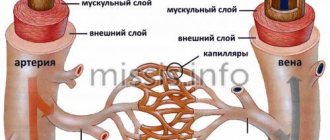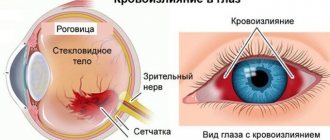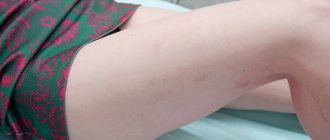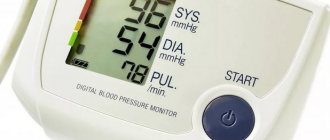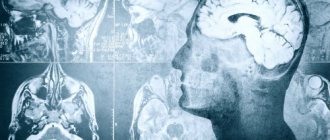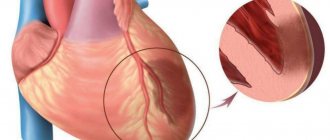Vessels are an integral part of the circulatory system. The blood flow in the body depends on their functioning. Some pathologies are characterized by rupture of blood vessels. In this case, spontaneous hematomas may appear. They occur either due to injury or due to internal disorders.
You need to understand that at the first manifestations of such a problem you should immediately consult a doctor. In a healthy person, blood vessels may occasionally burst under the influence of certain factors. However, this phenomenon is infrequent and manifests itself only as bruises. If hematomas occur constantly due to unknown reasons, then you need to visit a doctor. A phlebologist treats such problems.
Causes
Many people are interested in what a burst blood vessel on the hand looks like. This process manifests itself as bruises. Fragility of the bloodstream is most often observed in old age. This is due to the accumulation of salts, cholesterol and lipids. Accordingly, the vessels wear out, their functionality begins to deteriorate, and problems with elasticity appear. It is important to consult a doctor immediately when the first symptoms occur, otherwise you may wait for unpleasant consequences to develop.
Many people wonder how to deal with the fact that a blood vessel in their hand has burst. The causes are the most important factor that influences further treatment. There are external and internal provoking conditions.
The first is the following list:
- excessive loads;
- ingestion of chemicals into the body;
- thermal effects;
- injuries;
- allergies to cosmetics;
- taking medications that affect the condition of blood vessels;
- prolonged stress;
- sedentary lifestyle.
Internal reasons include:
- endocrine system disorders;
- kidney and liver problems;
- elderly age;
- high blood pressure that occurs too often;
- stress;
- hormonal imbalance (or taking hormonal medications);
- HIV;
- infections that affect the condition of blood vessels;
- allergies to medications;
- lupus erythematosus;
- excess weight;
- oncology;
- avitaminosis;
- constant pressure surges;
- problems with blood circulation in the brain.
Main causes of pathology
The capillary network in its structure has arterioles, precapillaries and venules. Capillaries can burst on the body for the following reasons:
- weakness of the capillary wall;
- excessive load on the lower limbs;
- thrombocytopenia;
- hypothermia;
- skin hypersensitivity;
- excess weight;
- cirrhosis of the liver;
- injury;
- diseases of the cardiovascular system;
- vegetative-vascular dystonia;
- exposure to chemicals;
- disturbances in the functioning of the endocrine gland.
Most often, the cause is the individual predisposition of the body, as well as thinning of the capillary wall, due to which it cannot withstand pressure. People suffering from hypertension should regularly examine their body for bleeding on the skin. Bursted capillaries indicate a surge in pressure that went unnoticed. In such patients, the vascular bed has pathological fragility, which can react when the weather changes. Women during pregnancy, childbirth, abortion, hormonal therapy complain that capillaries burst. Basically, when hormonal levels change, such a pathology does not pose a great danger to life and health, but can cause discomfort.
A person with a history of heart attack, stroke or vegetative-vascular dystonia is more prone to fragility of the vascular wall than others.
Return to contents
Symptoms
If a person’s blood vessels burst on his hands and bruises appear, then he should pay attention to his condition as a whole. Bleeding from the nose can often be a concern. If a similar problem is observed in the warm season, then cyanosis of the skin occurs and a feeling of chills appears.
For any patient, a hot day will bring only trials. The patient complains of dizziness, pain in blood vessels, aches, tachycardia and loss of consciousness. There may be problems with the vestibular apparatus. Spider veins can be seen on the skin. They appear due to the fact that the capillaries rupture.\
If a person develops subcutaneous hematomas on his hands, he should immediately consult a doctor. He will be able to prescribe effective treatment.
Exercises for blood vessels
The lack of full physical activity has the most adverse effect on the elasticity and strength of capillaries. It is important to understand that none of the types of blood vessels have their own muscles, and blood circulates through the system solely due to the operation of the valves of the venous system, and not due to the contraction of the muscular wall. That is why the patient must know how to treat blood vessels on the finger and what to do. A burst capillary is a consequence of physical inactivity and poor blood circulation in a person, so the patient needs to do special gymnastics, perform a set of exercises that accelerate the blood and stimulate the functioning of the venous system.
The exercise technique is extremely simple and it will take no more than 10 minutes every day to perform them regularly. The principle of the technique is the effect of vibration waves on blood vessels. Treatment is carried out as follows: the patient needs to lie on his back, raise his limbs and strain them as much as possible, until sensations appear that resemble a slight vibration in the body. A course of vibration therapy can be completed in a medical institution using a special device. Due to the resulting vibration, the walls of arteries and capillaries are strengthened, cleared of atherosclerotic deposits, and blood circulation is restored.
Diagnostic methods
In order to select competent therapy, it is necessary to perform all diagnostic measures. This stage is considered quite important. Let's look at the most effective tests:
- You need to take a rubber band and tie it above the elbow. After five minutes it needs to be removed. If a bruise appears, then urgent treatment should be started.
- If there are problems with blood vessels, gentle blows to the chest with a hammer will cause hematomas.
- The pinch method is the most commonly used. Near the collarbone, you need to gather the skin into a fold, turn it 90 degrees and squeeze a little. If the patient does not have problems with blood vessels, then a bruise will not appear.
Those patients who have weak capillaries are advised to take additional blood and urine tests. It is especially important to check for a coagulogram. ECG and capillaroscopy will not be superfluous. Thanks to them, you can understand how well blood moves through the vessels. Thanks to modern technologies, it will be possible to identify the condition of each capillary separately.
Fragile capillaries as a symptom of a serious illness
The health of the vascular system and the condition of arteries, veins and capillaries are negatively affected by pathologies of the endocrine system (thyroid gland), accompanied by hormonal surges. In patients suffering from diabetes, blood vessels burst very often. The problem can also arise with kidney pathologies and vegetative-vascular disorders.
One of the most common pathological causes of fragility of blood vessels is arterial hypertension, with the progression of which the walls of the capillaries are significantly weakened and cannot cope with the load that occurs during sudden surges in blood pressure.
Treatment methods
If the cause of vascular rupture is injury, then urgent action is not necessary. The bleeding will stop over time. The main thing is to provide emergency assistance correctly.
If blood vessels on the wrist or other part of the hand burst due to exposure to chemicals, you need to reduce the effect of the latter on the body. Personal protective equipment should be used to allow the capillaries to recover. With prolonged exposure to such substances, the vessels begin to thin out and become brittle.
Massage and hardening should be included in the therapeutic course. You need to give up all bad habits. The doctor is also required to prescribe medications and vitamins. Treatment should be aimed not only at eliminating the root cause, but also at strengthening the walls of blood vessels. The patient's diet plays an important role here.
— What causes thrombocytopenia?
— The pathology in any case is caused by an imbalance between the formation of platelets and the rate of their decay. This is a condition when the bone marrow is either not sufficiently formed, or their amount in the circulating blood decreases.
It should be noted that in some cases, insufficient production of platelets in the bone marrow and rapid breakdown in the circulating blood occur simultaneously.
A decrease in platelet products is most often associated with bone marrow damage or metaplasia (degeneration), as well as the development of osteomyelofibrosis, which leads to a decrease in the number of megakaryocytes (giant cells of the bone marrow); Occurs in the following diseases or conditions:
- Aplastic anemia (when the body is unable to produce enough new blood cells);
- Myelodysplasia (a group of diseases in which we encounter malformed, dysfunctional blood cells);
- Leukemia and myeloma diseases;
- Radiation and toxic effects on the hematopoietic system.
Increased destruction of platelets occurs in the so-called thrombocytopenia of consumption (during DIC syndrome) and deposition (during hepatolienal syndrome, portal cirrhosis of the liver, Budd-Chiari syndrome), as well as some cardiovascular anomalies and diseases (aneurysm, defects, stenting).
It should be noted that immune thrombocytopenia occurs most often, when the rapid breakdown of platelets is associated with the destruction of the immune system. This group includes primary immune thrombocytopenia (idiopathic thrombocytopenic purpura), a disease when the immune system, due to the destruction of the immune system, produces antibodies against its own platelets.
The secondary immune form develops when immune complexes are produced during other autoimmune diseases (systemic lupus erythematosus, antiphospholipid syndrome, lymphoproliferative diseases), as well as during non-autoimmune diseases (gestational thrombocytopenia, infectious diseases, viral infections, including the chronic type) .
Contributing factors:
- Infections (especially viral);
- Pregnancy;
- Surgical intervention;
- Strong physical activity;
- Vaccination.
Diet
Any person will be able to notice that a blood vessel on his hand has burst. What to do? In addition to medical treatment, you must follow a diet. You need to add more vitamins to your diet. You should eat chicken, rabbit, and cow meat. Fish also has a good effect on the body. You should enrich your diet with vegetables and fruits as much as possible. Nuts and legumes won't hurt. Fermented milk products also have a good effect.
Pickled vegetables, flour, bread, smoked foods, alcohol, coffee and soda are prohibited.
Eliminating the causes of burst blood vessels
The cause of hematomas and bruises on the arms is the fragility of the blood vessels. Treatment is aimed at increasing the elasticity of blood vessels and strengthening them. Therapy is prescribed after consultation with doctors of related specialties.
The first step is to inspect the diet for the amount of vitamins, then enrich it with products with angioprotective properties. It is recommended to consume chicken and rabbit, beef and veal, lean fish, fruits and vegetables, pasta and cereals, dairy products and legumes daily. It is forbidden to indulge in fatty foods and baked goods, marinades and smoked meats, and spices in large quantities. You should limit sweets and salt intake, it is better to give up alcohol, coffee and carbonated drinks.
General tips are as follows:
- If a bruise on your arm appears from a bruise or pinching, then there is no need to panic, a small bruise will go away on its own. You can use folk remedies for hematomas listed in another article;
- household chemicals age the skin and damage capillaries. To avoid trouble, you need to use gloves;
- if blood vessels burst throughout the body, including mucous membranes, you need to consult a doctor, this is an infection;
- to strengthen blood vessels, you need to activate blood flow by doing exercises, doing massage and strengthening the body, and giving up bad habits.
Medicines
The doctor will prescribe medications that relieve swelling and inflammation of blood vessels. An excellent remedy is “Suprastin”. It allows you to get rid of capillary fragility if it is the result of an allergy. “Enap” and “Captopril” are used for high blood pressure, which has affected the condition of the blood vessels. “Troxevasin” is necessary for all patients, regardless of why a blood vessel burst on a finger or in another place. It will strengthen the walls of the capillaries.
Sometimes doctors use instrumental treatment methods. Laser and pulsed light are used. Microsclerotherapy is also effective. If the case is too complex and is not corrected with medications, then doctors may prescribe surgery, during which the vessel will be removed.
Treatment
Medicines that strengthen vascular walls and improve blood circulation can help cope with the fragility of blood vessels. They can be prescribed by a doctor after consultation and tests.
To quickly resolve the problem, the following ointments are used:
- Troxevasin;
- Troxerutin;
- Heparin;
- Bruise-OFF;
- Lyoton.
These drugs relieve swelling, have an anticoagulant effect and quickly eliminate bruises.
Askorutin
Ascorutin is a combination drug from the group of capillary stabilizing agents. The medicine contains ascorbic acid and rutoside trihydrate (vitamin P). The drug reduces the fragility and permeability of capillaries, strengthens the walls of blood vessels, has an anti-inflammatory effect and reduces platelet aggregation.
Ascorutin should be used for 3-4 weeks
Ascorutin is taken after meals, 1 tablet 2-3 times a day. Depending on the nature of the disease, treatment is continued for 3–4 weeks.
Contraindications to the use of the drug are:
- increased blood clotting;
- diabetes;
- gout;
- urolithiasis disease;
- severe renal dysfunction;
- hypersensitivity to its components.
Traditional methods
Some traditional medicine methods can help if burst blood vessels appear on your hands.
Garlic is the most popular remedy. You should eat 2 cloves per day. Then the vessels will become strong and elastic. You can also use any decoctions of lemon juice, black currant, rowan, rose hips, and walnuts. All of them are enriched with a large amount of vitamins, which has a great effect on the condition of a person and his blood vessels individually. However, you need to remember that some drugs have contraindications. Before using this or that decoction, you should consult your doctor.
About prevention
If you are one of those patients who suffer from fragile blood vessels, first of all you should abandon the idea of self-medication and consult a doctor. The specialist will prescribe a comprehensive examination, determine the cause of the weakness of the capillaries and arteries, and prescribe treatment that will prevent the development of serious vascular complications.
In addition to medications and physiotherapeutic procedures, it is extremely important to follow simple preventive measures to maintain vascular health. You need to start by adjusting your own diet:
- consume citrus fruits whenever possible;
- replace sweets and flour with currants, raspberries, apricots, cherries and chokeberries;
- among vegetables for vessels, parsley and tomatoes are especially useful;
- Buckwheat is a useful product for improving the condition of capillaries, veins and arteries.
For preventive purposes, patients are recommended to harden themselves. At least once a week you should take a contrast shower - this is a tonic exercise for the circulatory system, which has a great effect on blood flow. If the blood vessels are abnormally fragile, you cannot harden them. Otherwise, you can provoke a more serious hemorrhage. If you have any problems with blood vessels, you need to quit smoking and drinking alcohol.
Gel “Badyaga Forte”
This drug helps fight bruises and hematomas. Therefore, if an unpleasant stain appears in the most visible place due to burst blood vessels, you can remove it using this product.
The main “ingredient” of the gel is badyaga. This is a freshwater sponge. It is caught in reservoirs. As a rule, it accumulates on snags and stones. It is dried and then ground into powder. This gel, when applied to the skin, causes surface irritation. Because of this, the vessels dilate and begin to move blood faster. The product also has a resolving and bactericidal effect.
Types of gangrene
Dry gangrene: This type is more common in diabetics and people with autoimmune disorders, as well as in atherosclerosis of the arteries of the hands. Infection is not usually the main cause of dry gangrene. However, it is possible that a secondary infection may occur and dry necrosis may disintegrate.
As a result of poor blood circulation (ischemia), tissue death and drying occurs. Dry gangrene is dried out tissue where the skin turns from brown or dark blue to black before dying completely. Rarely, self-healing may occur when the dead tissue is rejected, but most often a stump is formed.
Wet gangrene: This type develops when a secondary infection occurs. Wet gangrene has a poor prognosis due to the high risk of sepsis. Burn injuries, or injuries where a limb has been crushed or compressed, can also cut off the blood supply to the affected areas, causing gangrene. Infection with this type of gangrene can spread throughout the body very quickly, threatening the life of the patient.
Gas gangrene: Caused by bacteria that produce gas in the tissues. This is the most severe form and is caused mainly by the bacteria Clostridium perfringens. As the condition worsens, the skin becomes pale and grayish, and cracks when pressed. Requires prompt medical attention, as the patient may die within two days. Most often develops from gunshot wounds. Diabetics can develop even with minor damage to the skin.
What effect does the gel have?
The instructions for the drug describe the effect that the use of the gel leads to. It will be an excellent method for combating bruises due to burst blood vessels. Hematomas on the hands are easy to hide, but sometimes they can cause severe pain. The gel will be able to eliminate it. It also relieves itching. It is able to enhance the properties of the immune system, normalize blood circulation, which is important, restore the skin, and combat the active work of the sebaceous glands. The gel can also be used when exfoliating surfaces, as it tones and regenerates them.
Many people use the described remedy for swelling. The gel can also warm up the skin. Due to the fact that it contains essential oils, the drug fights dead cells. You can use the gel for rejuvenation, but keeping it on for more than 20 minutes is not recommended.
Vascular damage
Open vascular injuries vary widely and typically result from gunshot wounds, slash wounds, stab wounds, and stab wounds. Less commonly, the cause is lacerated and lacerated wounds. Taking into account the type of injured vessel, injuries of arteries and veins are distinguished, taking into account the nature of the damage - complete transverse and incomplete transverse ruptures, single through, lateral (tangential) and fenestrating injuries. Fenestrating injuries occur as a result of injury from shot or small fragments and are characterized by the presence of a “window” or “hole” in the wall of the vessel while blood flow is maintained.
As a rule, open vascular injuries are accompanied by external bleeding. However, sometimes a defect in the wall of a damaged artery or vein becomes “blocked” by a blood clot or is compressed by surrounding tissue, so there may be no bleeding. It is also possible that the blood may not leak out, but into the soft tissues with the formation of a tense hematoma. When large vessels are injured, blood loss and hypovolemic shock are observed in most cases.
Local symptoms of vascular injuries depend on the diameter of the injured artery or vein, the nature of the damage to the vascular wall, the anatomical features of the injury area, the amount of soft tissue destruction, concomitant damage to bones and nerves, the general condition of the patient, etc. When the veins are damaged, the blood is dark cherry and pours out a smooth stream; if the integrity of large trunks is damaged, pulsation is possible in time with breathing. The formation of a growing non-pulsating hematoma in the surrounding soft tissues is possible. The pulse in the peripheral arteries is preserved, the skin color in the distal parts is not changed, the dysfunction of the limb is due to the nature and severity of the injury.
Signs to suspect arterial damage include a wound in the projection of the vessel, external bleeding with a scarlet pulsating stream or an increasing pulsating hematoma, weakening or absence of pulsation in the arteries below the level of damage. The most important symptom of damage to the main arteries is increasing ischemia of the distal limbs. Insufficiency of local circulation is evidenced by paresthesia, pallor, and subsequently - cyanosis and marbling of the skin, coldness and ischemic pain, which do not decrease with immobilization and do not increase with palpation. The listed manifestations are accompanied by increasing muscle rigidity. First, active and then passive movements become difficult; with deep circulatory disorders, muscle contractures occur.
Rules for using the gel
The gel should only be applied to cleansed skin. It should also be low fat. It is spread in a thin layer. In this case, you need to carry out massaging movements. After the procedure, you should not immediately go out into the sun. Before use, you need to apply a little gel to your elbow to check if there is an allergic reaction to it. If there is no burning or rash, then this remedy can be used.
You are allowed to apply the gel no more than three times per day. Rub it in until completely absorbed. You should not press too hard on the skin, otherwise it can lead to large ruptures of blood vessels or pain. After the procedure, the affected area should be warmed up. You can simply cover it with a scarf or towel. It is best not to use the product on open wounds, otherwise itching, pain and redness will occur.
Symptoms and signs
Symptoms of severe arm ischemia:
- Pain in the hand and fingers at rest or with the slightest exertion.
- Difficulties in active movements
- Decreased sensitivity in fingers and hand
- Pale skin, collapsed veins
Symptoms of dry gangrene:
- Dry, wrinkled and blackened skin,
- Coldness and numbness of the limbs,
- Lack of sensation in the affected area,
- A wound filled with pus and with an unpleasant odor.
Symptoms of wet gangrene:
- High fever
- Reduced blood pressure,
- Swelling and severe pain in the affected area,
- Blisters or sores that may have a foul odor
- Discoloration of the skin over the area of gangrene,
- A cracking sound when pressing on the skin in the affected area (with gas gangrene).
Preventive measures
In order to prevent the occurrence of the described problem, you need to give up bad habits. Most often, burst blood vessels in the hands are observed in those patients who smoke. Because of tobacco, the capillaries begin to narrow, and the load on them increases. This entails a reduction in throughput. As a result, the vessels simply cannot stand it and become deformed. If the main cause of such an illness is smoking, then if therapy is performed without giving up the bad habit, it may not bring the desired effect.
Regular visits to the doctor are also considered an important preventative measure. This is especially true for older people. Most often, the fragility of blood vessels in such cases is caused by natural changes in the body. Patients who have hypertension are at risk. Anyone whose blood pressure is too high should be examined by a phlebologist at least once a year.
How to remove a bruise on a finger
If the vessels in the hands burst due to atherosclerosis, the doctor prescribes medications - Fenofibrate, Atorvastin. If there is a lack of nutrients in the body, a therapeutic diet and vitamins (Rutoside, Ascorutin) are prescribed. It is advisable to consume more foods with vitamin C - these are currants and rowan, raspberries and apricots, tomatoes, rose hips, cherries, citrus fruits and kiwi. B vitamins normalize hemodynamics and take part in hematopoiesis. Vitamin A strengthens blood vessels, vitamin E protects cell membranes.
To relieve the inflammatory process and swelling, Troxevasin is prescribed. Ointment and tablets strengthen blood vessels and prevent the formation of blood clots. You can also use other popular phlebotonics - Detralex, Phlebodia.
Angioprotective agents Aescin and Aescusan will help well. If vascular damage is caused by an allergic reaction, take antihistamines - Zyrtec, Suprastin. When the cause of burst capillaries is pressure surges, you need to monitor its level and, if necessary, take medications that normalize blood pressure. Drugs such as Lorista and Enalaril are prescribed by a doctor.
Instrumentally, the vessels are treated with laser therapy, microsclerotherapy, and photocoagulation. Only in the most severe cases are the burst vessels removed.
Physical exercise is important in the treatment of any vascular-related diseases. The fact is that physical activity pushes blood through the veins, and if a person moves little, the blood stagnates, which threatens with negative consequences. A simple way to improve blood circulation in your hands is to lie on your back, raise your hands up and shake them as if you need to shake off water. This is a vibration technique that helps improve blood circulation through the veins of not only the arms, but also the legs. Repeating this simple shaking for 10 minutes every day can improve the health of your veins and reduce the likelihood of pathologies. It's a good idea to add a full body massage to the shake-up. Carry out the procedure once every six months. For prevention, you can massage your legs and arms yourself to stimulate blood flow and strengthen blood vessels.
Results
If a person notices burst blood vessels on his hands, he should immediately contact a medical facility. You should not ignore the symptoms of fragility and fragility of capillaries. If a person is immediately diagnosed and treated, his chances of recovery will be high. If you ignore therapy, you can wait for serious complications to arise, which in the future can lead to surgery or death.
To quickly get rid of hematomas, you can use the above-described gel created on the basis of badyagi. It will dilate blood vessels, eliminate blood stagnation and relieve the problem for a short period of time. However, this does not mean that you do not need to see a doctor. The sooner the patient begins treatment, the sooner the disease will be eliminated.
Preventive measures should be observed. It must be remembered that the problem is easier to prevent than to cure.
Complications
- Extensive wounds requiring reconstructive surgery
- Amputation (of hand or finger),
- Sepsis
- Death
It is very important to begin treating gangrene before it becomes a life-threatening situation. Early treatment can help reduce the damage caused by gangrene to some extent. To prevent illness:
- Control your diabetes
- Treat wounds well
- Do not delay contacting a doctor if your fingers become dark or you have pain in your hand.
Gangrene, if left untreated, can cause infection to spread into the bloodstream and cause life-threatening sepsis. Cases of self-amputation with dry gangrene are rare enough to be taken into account as a factor in refusing surgical treatment.
Main outcomes:
- Amputation within healthy tissue is performed by general surgeons and does not allow any functionality to be preserved.
- Necrotomy followed by plastic closure of wounds - is performed after restoration of blood flow and allows for maximum preservation of the limb, since only dead tissue is removed
- Sepsis and death of the patient - occurs when the patient refuses surgical treatment in most cases of gangrene of the hand.
- Self-amputation - the rejection of dead tissue with subsequent independent healing of the stump is an extremely rare but possible outcome of gangrene of the hand.
